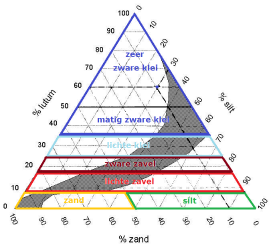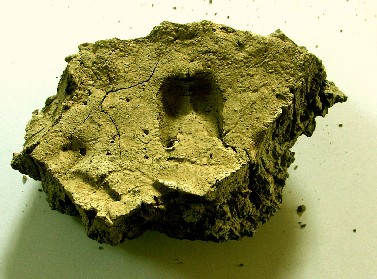Lutum
Lutum is the percentage of clay in the soil (particles smaller than 2 micrometers).
Sludgeability
In the past, when talking about clay, people used to talk about the percentage of 'washable' soil. Sludgeable refers to the clay particles smaller than 16 micrometers. The percentage of lutum is therefore always smaller than the percentage of silt. The term 'sludgeability' of the soil is no longer used in fertilizer recommendations. For those who want to convert lutum to sludge, this is the mutual relationship: %Sludgeable = %lutum + 0.3*%silt.
Lutum affects the workability, structure and moisture retention capacity of the soil. Fairly similar to organic matter.
Lutum is part of the clay-humus complex that is negatively charged. As a result, it temporarily retains the positively charged nutrients (K, Mg, etc.). When the lutum content is high, a higher organic matter content is important to keep the soil aerated and thus prevent compaction.
Sub-devision of soils
The classification of soil types is based primarily on the lutum (or: clay) content of the soil.
A sandy soil contains 0 to 8% lutum. Sulphur soils are the lighter clay soils with 8-12% lutum for the light sulphur soils, 12-17.5% lutum for the moderately light sulphur soils and 17.5-25% lutum for the heavy sulphur soils. In clay soils we find more than 25% lutum. Light clay soils have 25-35% lutum and moderate and heavy clay soils have more than 35% lutum.
Sandy soils can be further classified according to their loam content. Loam, unlike clay, is wind deposited (0-50 μm). Loamy sand contains 0-10% loam, loamy sandy soil 10-50% loam and loamy soil more than 50% loam.
Lutum particles
The lutum particles consist of flat sheets that sit on top of each other. These particles have a negative ion charge. Because of the negative charge of the clay fraction, the soil is able to bind (positive) ions of minerals dissolved in the soil water to the clay fraction. As a result, the minerals do not wash away with the groundwater, but remain bound to the clay particles and can be absorbed by the plants in this way. This is the reason that clay soil is usually more fertile than sandy soil.
